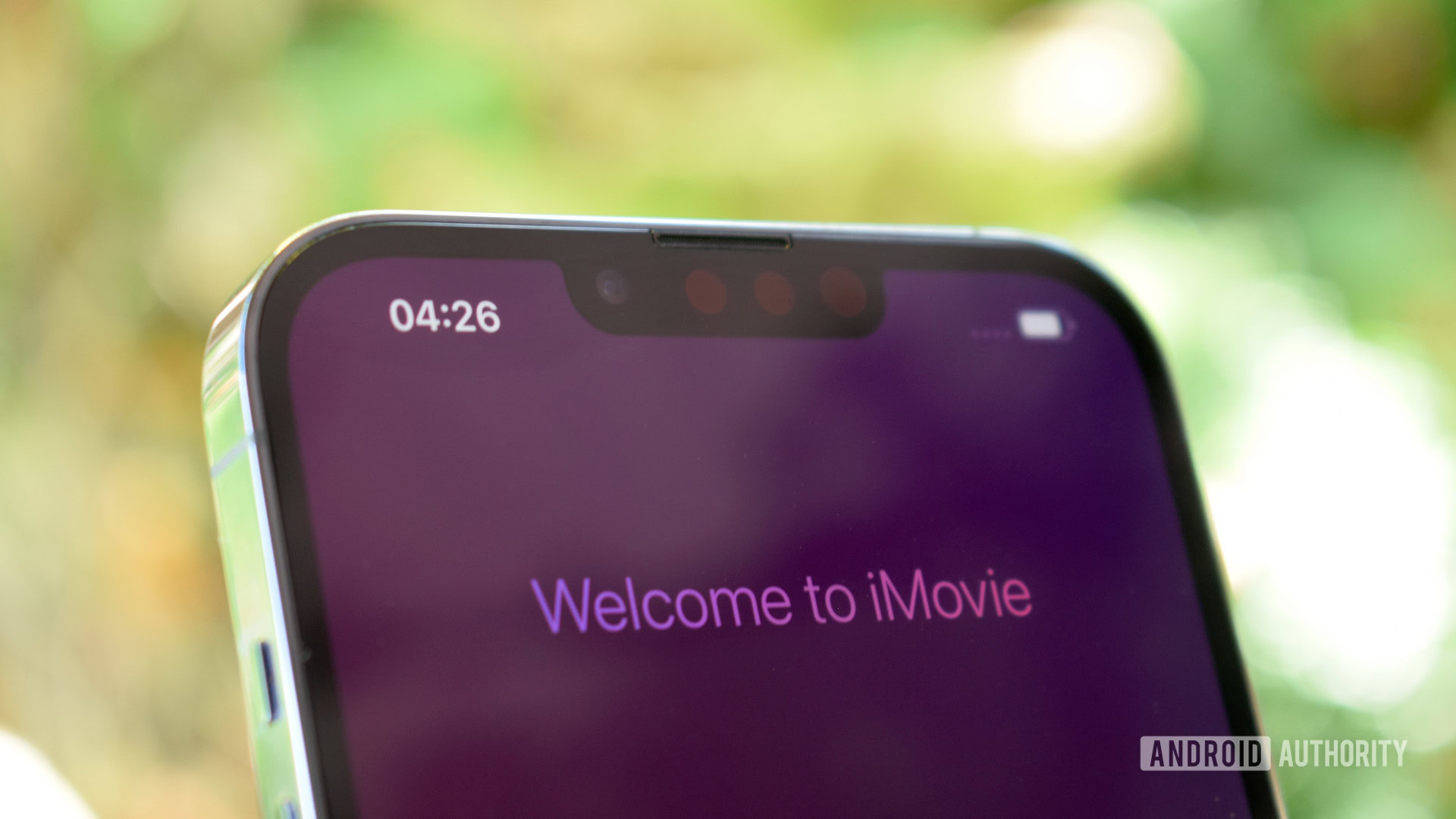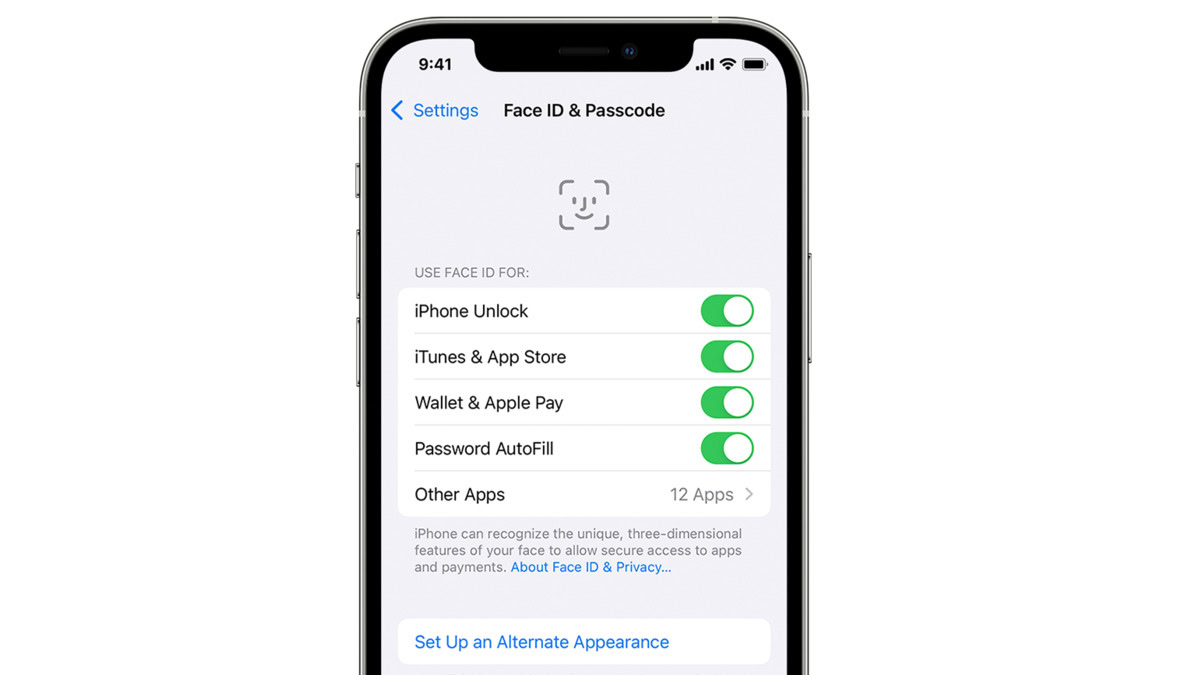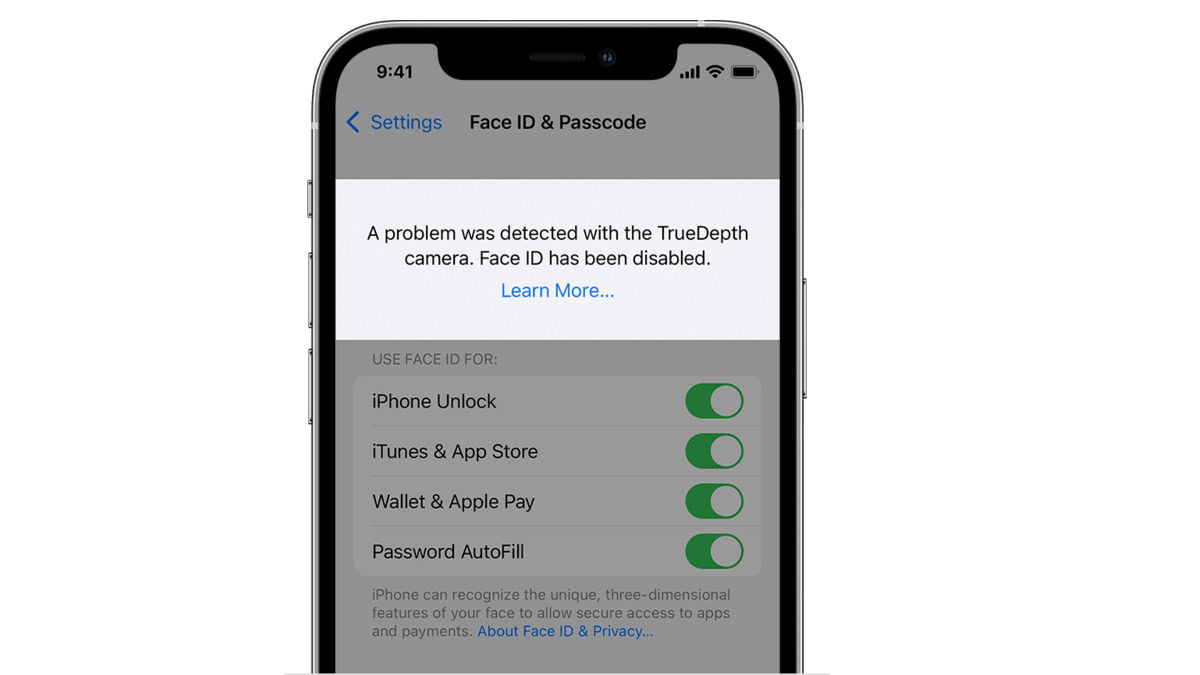Affiliate links on Android Authority may earn us a commission. Learn more.
Apple Face ID not working? Here's how to fix it
Every recent iPhone, except the iPhone SE, and some iPads use Face ID as the biometric authentication option instead of a fingerprint scanner. It’s easy to set up Face ID on your iPhone or iPad, and you can use it to unlock your phone, sign in to apps, confirm Apple Pay transactions, autofill passwords, and more. Face ID is a quick and convenient security step on your device, but only when it works. Some users face problems with Face ID not working, but there are ways to solve the issue. If Face ID isn’t working on your iPhone or iPad, here’s what you can try to fix it.
QUICK ANSWER
To fix Apple Face ID not working, go to Settings > Face ID and passcode and check the various settings. Ensure that you've enabled Face ID for Apple services and third-party apps. You can also add an alternate appearance, train Face ID to work with glasses and masks, or reset Face ID and go through the setup process again. Don't forget to update the device's software, and simply restarting it might be enough if Face ID isn't working because of a software glitch. Your only option is to send the device for repair if Face ID isn't working because of a hardware issue.
JUMP TO KEY SECTIONS
Why is my Apple Face ID not working?

Unless your iPhone or iPad has physical damage from an accidental bump or drop, Face ID not working is likely because of a software issue. If it is physical damage, your only option is to send the device in for repair. If your Face ID isn’t working, you’ll see error messages like “Face ID not available” or “Face ID has been disabled.” Other signs to look for include needing multiple attempts to unlock your phone and if you see a prompt to enter a passcode.
There are a few instances where the device may disable Face ID. The feature will stop working after five unsuccessful scans. You may need to enter your passcode if you’ve just turned on or restarted the device or if the device hasn’t been unlocked in more than 48 hours. Face ID will also not work if you’re on the Emergency SOS screen or if you’ve entered the device into Lost mode using the Find My app.
However, Face ID may also not work if there is an issue with the settings, something is blocking the TrueDepth camera, if you’re wearing a mask, the software isn’t updated, and general software bugs and glitches. There are some quick troubleshooting steps you can try which should fix the problem if it is a software issue.
How to fix Face ID not working
Check Face ID settings

There might be an issue with the Face ID settings, especially if it isn’t working with third-party applications. Go to Settings > Face ID and passcode and ensure that Face ID is enabled for the available features. You can enable Face ID to unlock the device and for Apple services like iTunes, the App Store, Wallet, Apple Pay, and Password Autofill.
If you’re having problems using Face ID with third-party apps, go to Settings > Face ID and passcode > Other apps and toggle on the apps you want to use with Face ID.
Ensure that nothing is blocking the TrueDepth camera
Your iPhone or iPad uses the front-facing TrueDepth camera for Face ID. You might have to clean smudges and debris from the screen and stop it from blocking the camera. A shattered screen, scratched screen protector, and some thick and ultra-rugged iPhone cases might also block a part of the sensor and impact Face ID functionality. You will get a “camera covered” error message if the device detects something blocking the TrueDepth camera.
Avoid blocking your face

Face ID is designed for full-face recognition and works best with an unblocked view of your eyes, nose, and mouth. There shouldn’t be a problem using Face ID while wearing hats, scarves, glasses, and sunglasses. However, polarized sunglasses won’t work, so you’ll have to remove them and try again.
While Face ID should work in most instances, it may have trouble recognizing you if you frequently change your glasses, grow facial hair, or if there’s any drastic shift in appearance. In this case, you should set up an “alternate appearance.” Go to Settings > Face ID and passcode and tap on Set up and alternate appearance. On the Face ID and passcode page, you will also find the option to “Add glasses.” You can add up to four pairs of glasses.
You can set up Face ID to work with a mask if you have an iPhone 12 or newer device running iOS 15.4 or later. Go to Settings > Face ID and passcode and enable Face ID with a mask. Go through the Face ID setup process again with a mask on. Face ID will work if you’re wearing a mask and glasses. But it won’t with sunglasses since the “with mask” option requires a clear view of your eyes and the area around them.
Check your phone hardware

A known TrueDepth camera issue might stop Face ID from working. You will likely have to send your device for repair if you see an error that says, “A problem was detected with the TrueDepth camera. Face ID has been disabled.” To check your device’s hardware, go to Settings > General > About > Parts and service history.
You will find the option for TrueDepth camera on an iPhone 12 or newer. If everything is working as expected, it should say “genuine Apple part.” But if there’s a problem, you’ll see an “unknown part” error or “Face ID issue detected.” Try updating the device to the latest version of iOS or iPadOS to see if the problem goes away. However, your only option might be to get the device repaired.
Hold the device correctly
Using Face ID is almost second nature for iPhone and iPad users. But there is a correct way of holding the device to ensure that the feature works correctly. You can use Face ID in portrait and landscape orientations on the iPhone 13 and iPhone 14 running iOS 16 and any iPad that supports the feature. If you have an older iPhone, you will have to use it in portrait orientation. Make sure that the device is within arm’s length (10-20 inches) and that you are facing the camera.
Restart your device and reset your Face ID
If Face ID is not working because of a software bug, restarting your iPhone or iPad may be enough to fix the problem. If nothing works, it’s best to reset your Face ID and set it up again. Go to Settings > Face ID and passcode and tap Reset Face ID. Then select Set up Face ID and go through the setup process again.
FAQs
Any recent iPhone going back to the iPhone X supports Face ID, with the exception of the iPhone SE. It’s also available on every 11-inch iPad Pro and going back to the 3rd generation of the 12.9-inch iPad Pro.
If your Face ID isn’t working because of a hardware problem, you will have to send your device for repair. Without warranty or AppleCare coverage, the cost will be the same as it would be to replace a screen or camera part. It’s best to book an appointment at an authorized Apple repair center to find out what needs to be fixed. Apple will fix the Face ID hardware for free if it’s caused by a manufacturing defect.
Every iPhone, going back to the iPhone 7, has an IP67 rating for dust and water resistance. However, physical damage may cause problems with water resistance. Any subsequent liquid exposure may stop your Face ID from working. Your only option is to send the device for repair if Face ID isn’t working because of water damage.